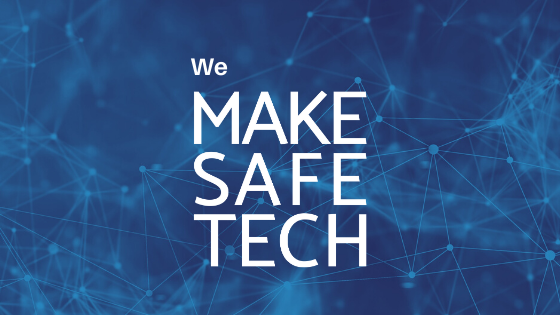When we titled our first blog post, “Public Safety Needs a New Look,” we had no idea the degree of disruption COVID-19 would have on our world. But it has changed us – let’s look at those challenges and discuss how we move forward in a COVID-19 world.
Two hundred ten countries have confirmed cases of COVID-19, resulting in global break downs in the personal protective equipment (PPE) supply chain due to the entire world competing for the same supplies. During the height of COVID-19 in mid to late March, global production of N-95 masks could only keep up with 3% of demand. This is critically important to understand: not only were local hospitals competing for the last bits of vendor inventories, states increasingly were engaging one another, and state and local officials were jockeying with the federal government for PPE, especially N-95 masks.
Moving forward, I believe we have to redesign the United States’ public safety supply chain altogether. At Safe Tech, we understand this will require mutual agreements, standard operating procedure changes, administrative policy changes, and, in some cases, legislation. I can only stress that the future of the public safety supply chain needs to include material and equipment sourcing, consideration of resource dependencies, and the ability to have self-sufficient localities with sustainable resources during emergencies. Specifically, I believe advancements in materials and additive manufacturing processes will play a critical role in correcting disrupted supply chains in future events.

Blog Question: I am eager to hear what you believe needs to change going forward for your department or base to source PPE and required goods, either through the remainder of COVID-19 or for the next pandemic?
Locally here in Texas, this led to the formation of the Texas Military Department’s COVID-19 Innovation Task Force, which I was asked to join at the end of March 2020. Our charge from the first call (social distancing, of course) was to address the broken supply chain and to find innovative solutions to stop gaps in some places, fill voids in other areas, and in some cases, completely change how the supply chain operates.
Blog Question: Before I share a few examples, I am curious how many people reading this working in public safety, armed forces, or the government are still using physical paper to handle your inventory management, or some combination still reliant on paper documentation? In the Comment section below, please share “Paper” or “Electronically.”
Below are a few examples of how we are innovating during COVID-19:
- In Texas, most supplies are shipped to San Antonio. At the start of COVID-19, the entire ordering, delivery, and inventory process were on paper. Thanks to a Houston-based startup, they have scaled their inventory process, and today the entire process is electronic with elements of automation.
- To assist U.S. manufacturers in scaling up their facilities to maximize output, while also hiring new employees or training temporary contractors during COVID-19, Texas National Guard has sent staff to Prestige Ameritech to scale up the N95 mask production from 1 Million/Masks/Day to 3 Million/Masks/Day.
- Additive Manufacturing has shown up in ways that without a pandemic, we would never see. 3D printers have produced ventilator parts, face masks, face shields, face mask strap bands, ventilator parts, and parts to reduce germ spreading on doors and surfaces. America Makes is the national manufacturing innovator coordinating all 3D printed designs requiring FDA Emergency Use Authorization (EUAs).

In 2020, Make Safe Tech, Inc. (Safe Tech) strategically planned to attend eight of the country’s largest public safety conferences. As of May 1, 2020, half (four conferences) have been canceled or postponed. We planned to hold six regional pitch competitions, and three of those conferences have already been delayed. Safe Tech cut the ribbon and opened our Fab Lab and Maker’s Space in College Station as our central office to bring responders and armed forces together with those that MAKE SAFE TECH. Sixteen days later, we had to close our doors and abide by a shelter in place.
Now, as we release this post, certain parts of the country are beginning Phase I of their Re-Opening programs. Even so, we must not lose sight that COVID-19 is not behind us just yet. I read on April 30, 2020, that certain research teams are entering Phase IV clinical trials of a tuberculosis vaccine that could blunt the devastating effects of COVID-19. Innovations like this are critical given that they could be available at scale within six months, while a COVID-19 vaccine is still 12-18 months away. This type of innovation and coordination between academia and public and private sectors is what we need, and I’m sure we will see more of it in the months to come.
Moving forward, public safety innovation is the solution to thriving in a post-COVID-19 world. We must think outside of the box. We must think both locally and globally. At Safe Tech, we have refocused our efforts to help public safety innovators access the Payroll Protection Plan and multiple nondilutive funding opportunities (see our Linkedin account for our Safe Tech Funding Slides). As soon as we can, we will provide first responder offices and departments hands-on demonstrations through our SAFE TECH ROADSHOW (#SafeTechRoadShow2020). We will continue changing the game in public safety and defense innovation. Join Us as we MAKE SAFE TECH!!

